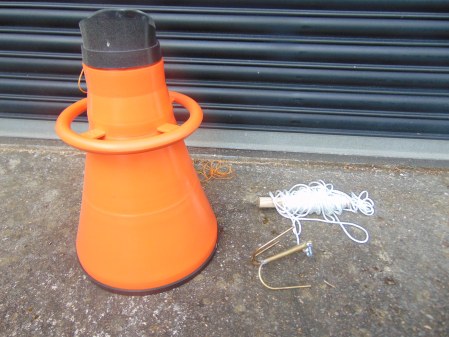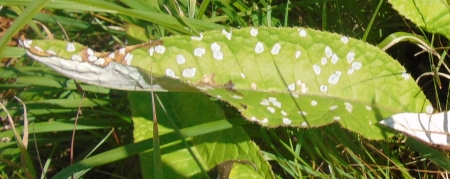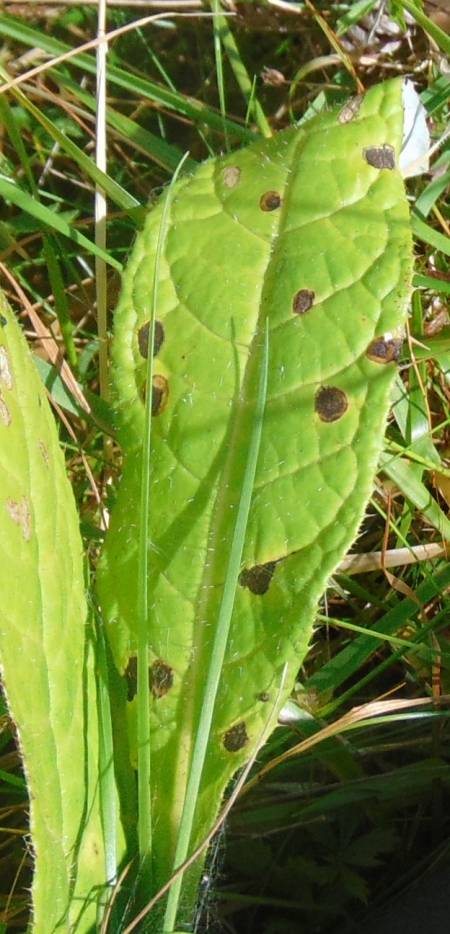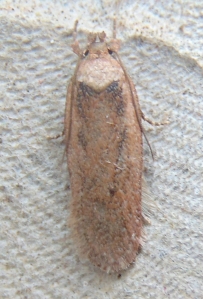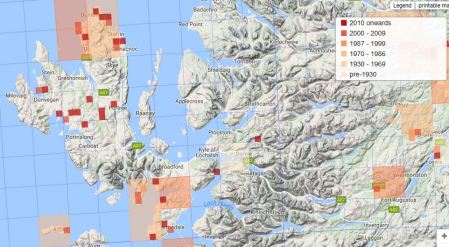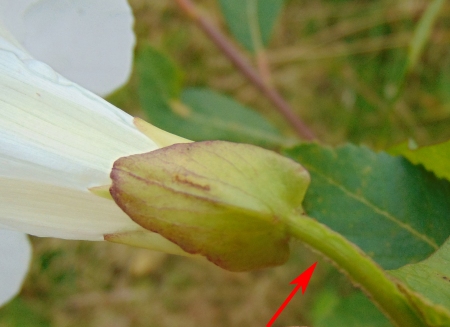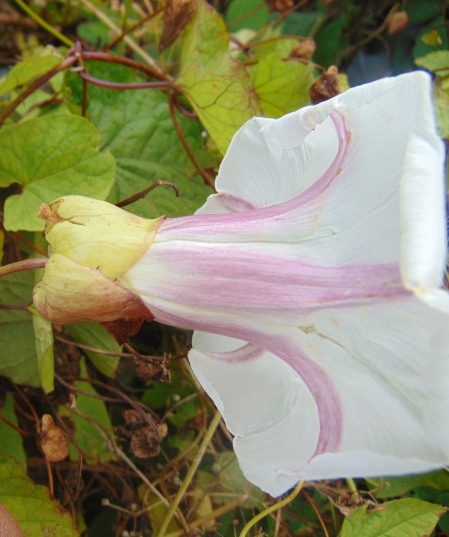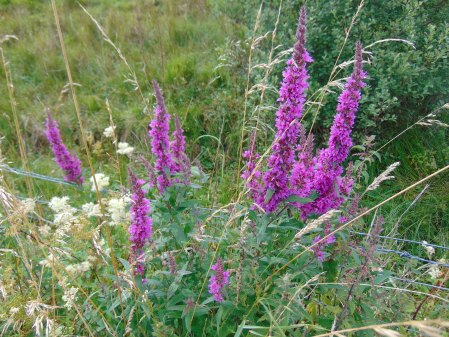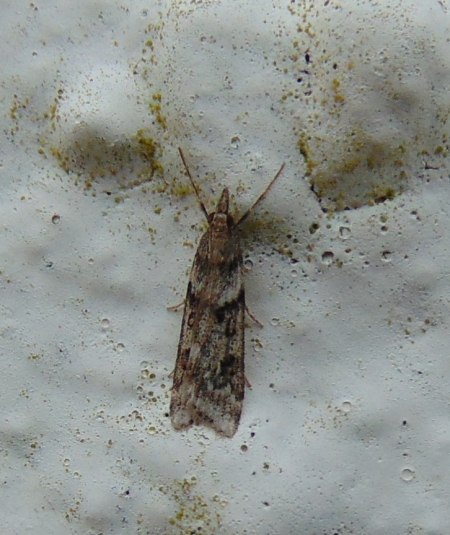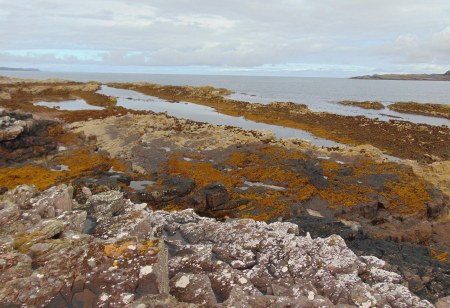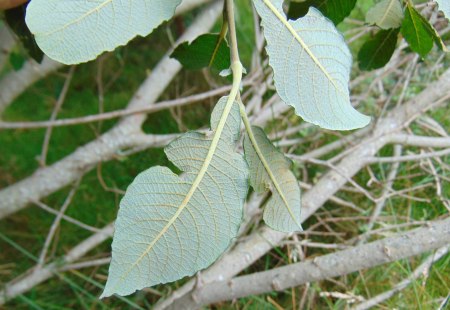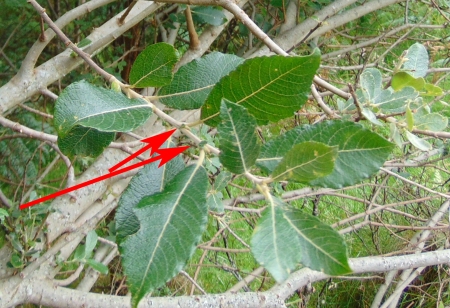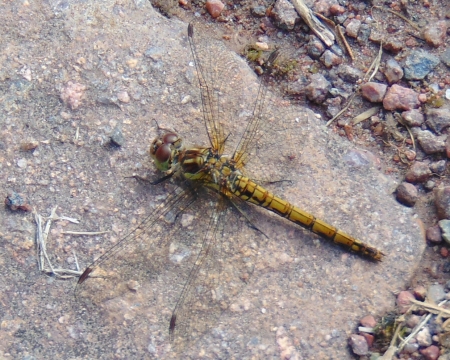The track between Kinloch and Kylerhea is like the curate’s egg – good in parts – especially at this time of year with the bracken at its peak. Close to the middle is Meall Port and until yesterday the tetrads there were virtually unrecorded: NG71N (84% land) had two plants recorded and NG71M (1% land) nil.
The track from Kinloch into NG71N is mostly pretty good and took me through other tetrads that benefited from more effort, notably a corner of NG71I which had only 25 taxa recorded.
So, 0, 2 and 25 have been improved to 101, 122 and 100 and I also added 50 to NG71H and 8 to NG71C.
Highlights included Rubus saxatilis (Stone Bramble) and Stachys sylvatica (Hedge Woundwort) which are common species (present in >200 tetrads in VC104) that had not been recorded in the 10km square NG71 since before 2000. There are still six taxa in this category including three Equisetum spp. – and certainly I never saw a single horsetail yesterday.
Both the coastal tetrads M and N had Osmunda regalis (Royal Fern) where a burn enters the sea – the only previous record for NG71 was undated (1971-1986 ) and unlocalised.
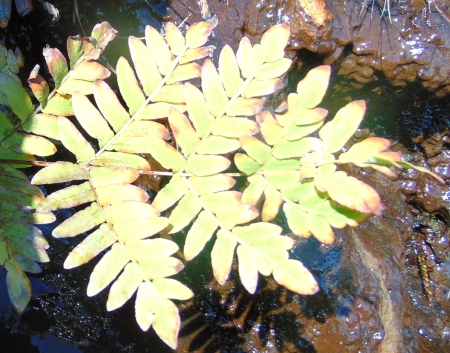
Osmunda regalis
Also Lycopus europaeus (Gypsywort):
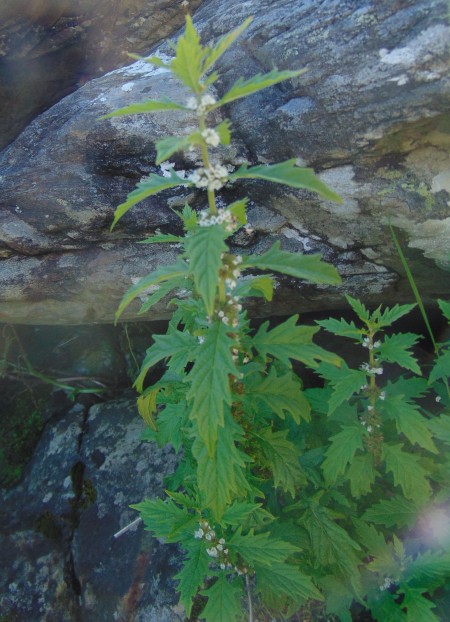
Lycopus europaeus
plus Carex otrubae (False Fox-sedge) and Senecio sylvaticus (Heath Groundsel) and several sites for Hymenophyllum wilsonii (Wilson’s Filmy-fern) and Carex laevigata (Smooth-stalked Sedge).
Things in flower, Dactylorhiza maculata (Heath Spotted-orchid) and Hyacinthoides non-scripta (Bluebell) (!):
There were spangle galls on Quercus robur (Pedunculate Oak) caused by the cynipid wasp Neuroterus quercusbaccarum.
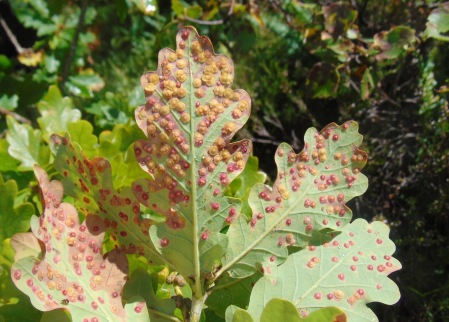
Spangle Galls
and this bee-mimic, the hoverfly Eristalis pertinax, which is apparently common – but as for many insects there are limited Skye records on the NBN Atlas – and none in NG71.
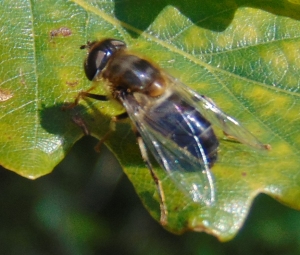
Eristalis pertinax

